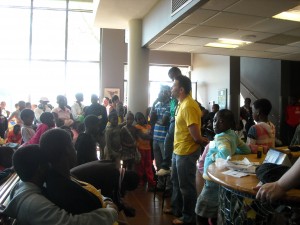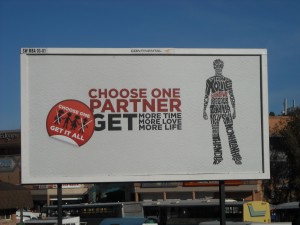Inspired by children
This weekend, we had the great opportunity to participate in Mbabane’s Teen Club which takes place here at the Baylor Center of Excellence (COE). Teen Club happens every Saturday in different places in Swaziland, and kids ages 10-18, most who are HIV +, come together to play and learn about health related topics. They are divided up into age groups 10-12, 13-15, and 16-18 and do age appropriate activities. I hung out with the 13-15 year olds, and our activities were related to male and female anatomy and body changes during the adolescent years. They had a short Q&A session, which included a lot of singing, but my favorite part was at the very end when they all sang “The World’s Greatest” by R. Kelly. Everyone sang with so much enthusiasm and energy- it was really touching and inspiring.
For fun, we also explored the town of Mbabane. We got a chance to visit the fruit and vegetable market and look at some of the shopping areas in The Mall and The Plaza. Mbabane is actually surprisingly westernized! Also, there are many billboards that are geared at reminding people of the HIV problem in the country and reminding them to take precautions so stop the spread of it.
At the clinic, we got a chance to shadow the adherence and phlebotomy expert clients and the pharmacist. While observing the adherence department, we found that adherence charts are no longer used here because they have an excellent computerized system for each patient that calculates the adherence if told the number of days since the last visit, the dose, the number of pills given, and the number of pills remaining. At Mbabane, the adherence has to be from 95-105% for it to be considered good adherence, and if patients are not being adherent they were send to a social worker. They unfortunately didn’t do any liquid ARV adherence, but they said that they just measure the remaining volume of liquid using a syringe or measuring cup and calculate the adherence the same way. However, we need to find out if all outreach clinics take as much care in measuring the liquid ARV volume. In the phlebotomy lab, we watched blood draws, and Pepsi, the phlebotomist, informed us of the blood tests that are run at the COE. At this clinic, they are very careful with blood draws; for instance, she would bend and incinerate the sharps for disposal after use. Finally, we visited the pharmacy. Since patient records are all computerized here, filling prescriptions is quite organized. The one thing I learned while in the pharmacy though is that even if some practices do not conform to what we deem as correct in the US, they are done here with a good reason. For example, they have prepackaged sets of tablets for easy access, but they don’t label the cabinets these tablets are in so that only the pharmacists know which drug is which and others cannot walk in and take the drugs they need. It may seem strange initially for us, as we are so used to everything being labeled, but this system works well for their situation!
On Tuesday, Dr. Eric took us to Baylor’s satellite clinic at Manzini’s RFM, Raleigh Fitkin Memorial Hospital. Since both of Baylor’s satellite clinics are attached to government hospitals, they are exclusively pediatric clinics, since the parents can go right next door to the adult AIDS clinic. The RFM clinic is much smaller than the COE, with less staff and fewer patients. A sad but interesting fact was that most of the tiny babies were brought into the clinic by their grandparents, since many times their parents would have already died from AIDS. It was also interesting to see that all of the records there were kept on paper, whereas the records at the COE are kept on paper and computer. Since there were few computers at the RFM clinic, adherence was calculated by hand using a few simple formulas. Perhaps the use of adherence charts here would be helpful. We also got a chance to tour RFM government hospital. It was quite a large open air hospital that was very crowded. Our visit to the children’s ward was the saddest because there were so many children in unhygienic conditions receiving little medical care. However, remembering the happiness of the children in Teen Club gave me hope that someday these children too would be healthy enough to run and play with other children!
Teen Club Stop the Spread of HIV billboard


